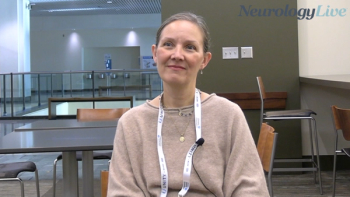
Future Role of Transplantation in hATTR Amyloidosis
John L. Berk, MD: When was the last time you actually sent someone to a liver transplant?
Michael J. Polydefkis, MD: It’s been a while.
P. James B. Dyck, MD: I think the liver transplant future in TTR [transthyretin amyloidosis] is probably pretty much over, actually. I think these drugs have really changed that. It is interesting because they also brought up domino liver transplants. They could take livers from patients with TTR and give them to other people with end-stage liver disease. And so, I think that practice for TTR is probably pretty much over.
John L. Berk, MD: And the process of domino liver transplantation—is that safe? Does it confer disease in the recipient?
P. James B. Dyck, MD: It absolutely does, but the thinking has been that these are people who will probably die from their liver disease and don’t have a lot of choices. So if they take a liver from somebody with TTR amyloid, at some point down the road they will also develop their own neuropathy if they live long enough, but that probably will be delayed. In my own institution, last week we had grand rounds on a patient who had end-stage liver disease, got a domino liver transplant, and 5 years later developed a very progressive neuropathy. The patient died within 5 years of developing it from TTR amyloid from his domino liver transplant.
John L. Berk, MD: I think that’s very illustrative and I’m glad you brought that up. The original thinking behind the domino transplant process was that if it took 50 to 55 years for the first person, the original owner of the liver to get familial amyloid disease manifestations, the same was going to be true of the recipient. So they would effectively be protected from ever getting disease.
But we now know, horrifically, that the recipient is the recipient of an accelerated disease process, and that actually is an issue that Akshay sort of touched on. We don’t understand the influences in the TTR process. You’re born with the abnormal protein. Why is there a middle-age onset of disease? And what are the things that either retard or accelerate the disease process? Those are all things we don’t know. But I certainly echo your thoughts about orthotopic liver transplants.
There’s one population in the world, and that’s the V30M population, particularly with early onset in Portugal, that has been well treated with that early intervention. But recent data from Teresa Coelho show that tafamidis in low dose has better survival than the aggregate population who’s undergone liver transplantation. So I pretty firmly agree with you that the time of liver transplant has passed. And when people consider it now, particularly in those who have significant amyloid deposition in the heart or nerves at the time of transplantation, they are probably misguided because there will be progressive disease even with a successful liver transplant. That deposition is going to be wild-type TTR on top of the variant matrix that’s already present.
So it’s a little bit off topic, but liver transplants may not be part of the process now. What about some of these patients who have polyneuropathy or maybe have a variant that is heart-specific? Do you consider them for liver transplant? Akshay, I’m talking to you.
Akshay S. Desai, MD, MPH: I think it’s a moving target. I think that we have certainly been concerned about isolated cardiac transplantation until recently in patients with familial variants of amyloid that affect the heart. There has been the concern that the donor heart will ultimately develop the same process. I think given this long gestation period between the development of clinically relevant amyloid cardiomyopathy and initial exposure to the variant protein, the thought has been that maybe you can get away with isolated heart transplantation in the same way that you talked about. But there’s been some reluctance to think about isolated heart and think more about heart-liver as an approach in these patients.
I think that the ability to delay or stop deposition of amyloid in the donor organ really opens up a new window of opportunity. Now, if you have patients who present predominantly with cardiac involvement by amyloid in the setting of a familial inherited transthyretin protein variant, in that circumstance the donor heart might be able to be insulated from development of clinically relevant disease. And so, I think the potential for heart transplantation has expanded in this modern era of novel therapeutics.
John L. Berk, MD: I think you make a very interesting point. The cardiac transplant programs have been fairly myopic, in viewing the issue as to whether there would be disease recurrence in the allograft. But at the same time, the rest of the body is still being exposed to the variant protein. We have experience in following up with people who have had isolated heart transplants, preserving the criminal liver, in which the patients have progressed with extracardiac disease—be it in the lungs, or nerves, or both—which ends up being just as devastating.
Akshay S. Desai, MD, MPH: As have we.
John L. Berk, MD: I agree, absolutely.
Newsletter
Keep your finger on the pulse of neurology—subscribe to NeurologyLive for expert interviews, new data, and breakthrough treatment updates.


































